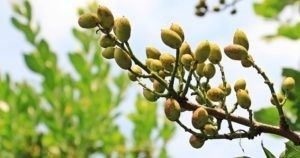Agri Investor
Pistachio and almond export demand outpaces walnuts: Farmer Mac
By: Chris Janiec
A fund manager with some tree nut investments tells Agri Investor that protectionism is a new and growing concern in the market.

US almond and pistachio producers continue to benefit from growth in international consumption, while walnut producers have endured a sharp drop in demand across key global markets, according to Farmer Mac.
In a report in its quarterly agricultural outlook The Feed, Farmer Mac examined the 60 percent increase in US acres planted with almonds, pistachios and walnuts since 2007 and described recent developments relevant to demand for each crop.
“As producers plant more acreage and consumer demand grows, the share of total farm income attributable to almonds, pistachios and walnuts has doubled,” wrote Farmer Mac economist Ryan Kuhns in the report. “Although the upward trend in acreage has been true for each of these tree nut commodities, the supply and demand fundamentals vary heading into the back-half of the 2017 marketing year.”
For almonds, Farmer Mac wrote that despite inconsistent and freezing temperatures, the USDA is currently expecting a 7 percent increase in US acres planted with the crop this year. The report cites the California Almond Board’s reports of a 6.6 percent year-on-year increase in domestic demand and 14 percent year-to-date growth in almond exports to demonstrate that consumers’ desire for tree nuts has kept pace with increasing production.
India and China have emerged as especially important export markets for US almond producers, with each country having seen a more than 20 percent increase in imports from the US this marketing year alone.
“Almonds were one of several agricultural commodities affected by the recent Chinese tariff increased in response to proposed US steel and aluminum tariffs. The industry will be keeping a close eye on whether an increase in the Chinese tariff on almonds, (from 10 to 25 percent), will have a significant effect on demand,” wrote Kuhns.
A fund manager with tree nut investments echoed to Agri Investor in an email that trade is a growing concern with the market.
“The largest risk in the tree nut sector is the risk of trade wars and increased protectionism,” the manager wrote. “That is not to say there are no other risks (there are) but that’s the biggest one right now, and it’s a new one over the last 18 months.”
While export markets have been increasingly important in shaping the fates of US almond producers, Kuhns wrote that it is an 11 percent increase in domestic pistachio consumption that has proven the most significant recent development in that market.
Though exports have accounted for three fifths of pistachio shipments over the past five years, because pistachio yields generally vary year to year, Kuhns told Agri Investor that the surge in domestic demand is particularly well-timed due to a larger than expected off-year crop in 2017.
In the report, Kuhns wrote that the current marketing year has seen a 17 percent decrease in walnut exports, with declines down across key markets in Europe, the Middle East, Africa and Asia.
Stressing the fact that that dependable data is very hard to come by, Kuhns said that institutional investors have generally favored almonds and pistachios over walnuts, in part because fewer acres of walnut orchards have come onto the market.
While the dip in international demand facing US walnut producers is significant, Kuhns said, that comes after a record year and was influenced in part by a recent uptick in prices.
“It’s not to say that it’s not still good, it’s just not as good as it has been,” said Kuhns.
Kuhns said that the recent increase in overall tree nut production in California fits into a wider pattern of producers gradually moving from grains into higher value crops over the past 100 years. While private investors have played a role in that shift, Kuhns said, so too have individual producers looking to make the most of their land amid rising values.
“Measuring the impact of institutional investors is a tough nut to crack,” quipped Kuhns. “One thing that a lot of people in California agriculture like to joke about is that a lot of dairy farmers out there, they like to consider themselves dairy farmers, but if you look out behind all their dairy barns they’ll have a lot of almond orchards. That’s because it’s more profitable to grow almonds and not grow the feed for the animals or not grow the other crops that they used to have.”
To View Full Article: Click Here



